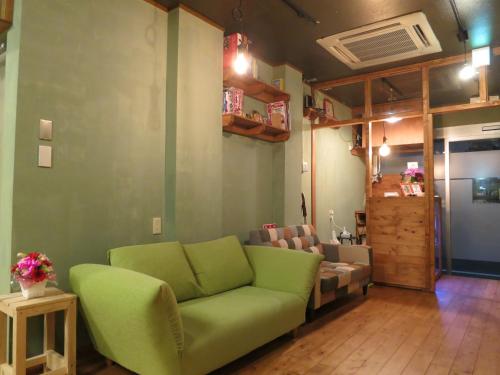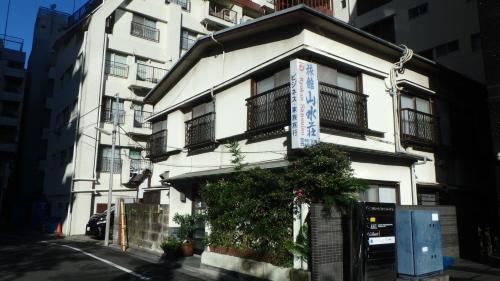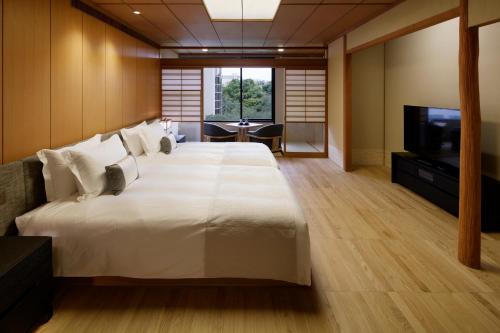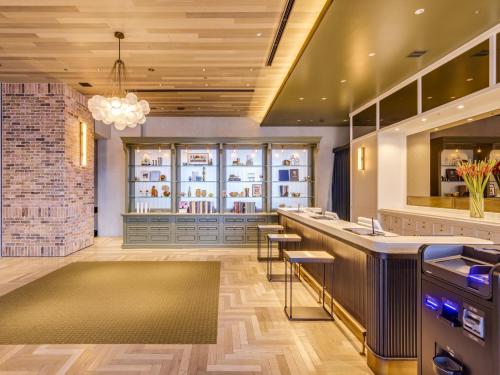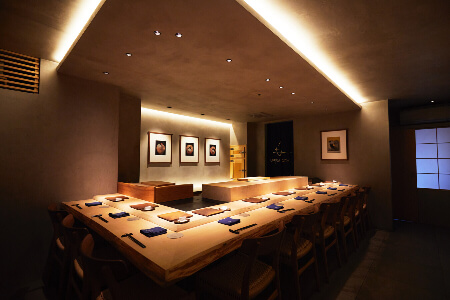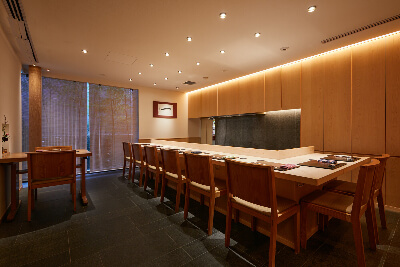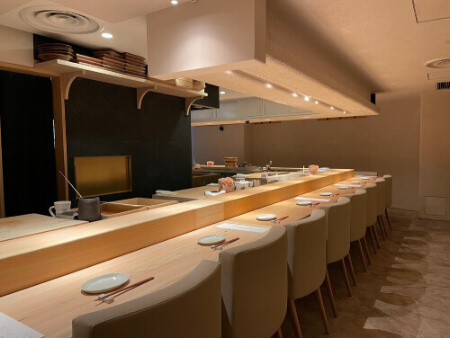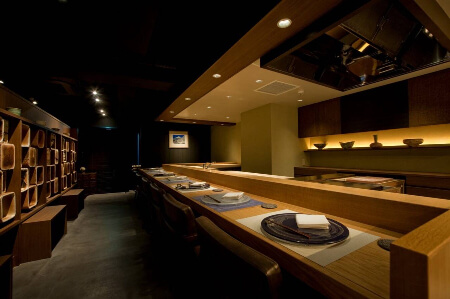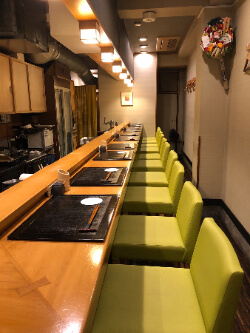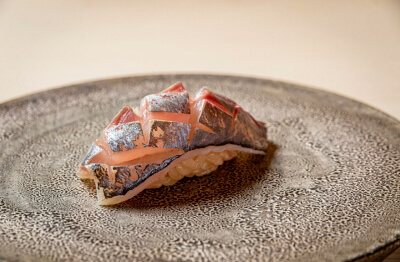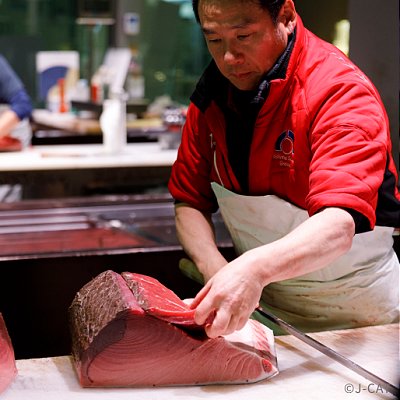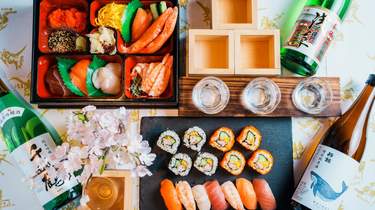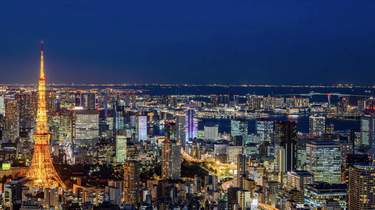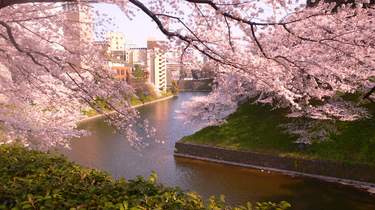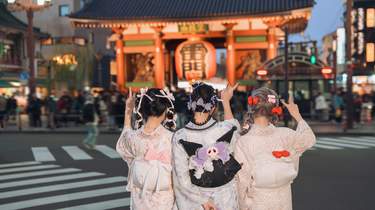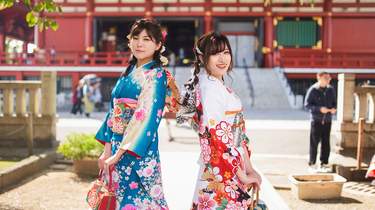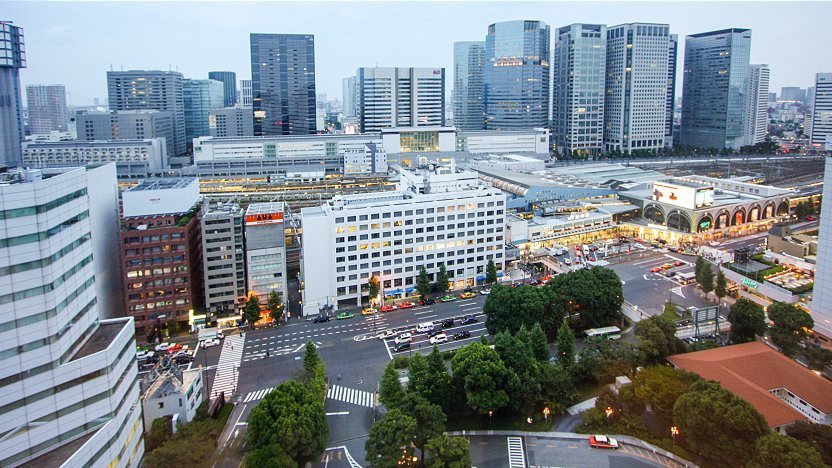
Shinagawa (iì) is one of Tokyo's 23 city wards, and Shinagawa Station is one of the city's busiest stations. Its convenience as a transportation hub has attracted many hotels, offices, restaurants and shops. Shinagawa has been catering to travelers at least since the Edo Period (1603-1868), when it was the first stop on the main road linking Tokyo with Kyoto.
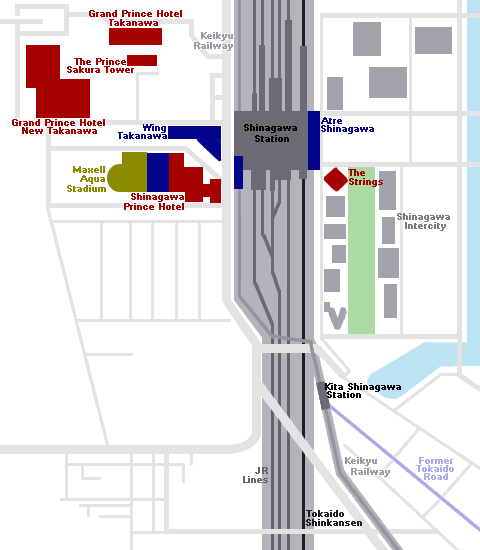
Shinagawa Station is one of the principal transportation hubs of Tokyo. The station is served by many lines, including the Yamanote Line and the Tokaido Shinkansen. Direct train connections to both Haneda Airport and Narita Airport are provided, and Haneda is just a 15 minute ride away. The station will gain even further prominence in the late 2020s when it is scheduled to become the Tokyo terminal of the new maglev train line to Nagoya.
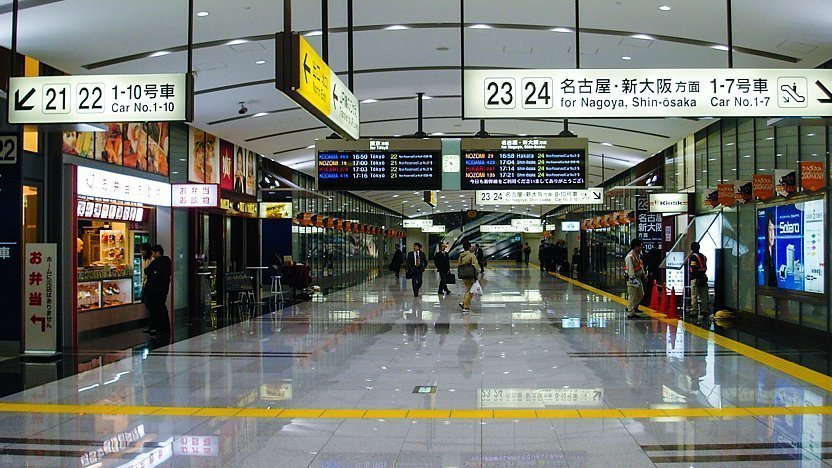
Shinagawa Station has two exits, around which much development has taken and will continue to take place: the Takanawa Exit on the west side, and the Konan Exit on the east side. The Takanawa side has many hotels, especially of the Prince Hotel brand. There are also a number of shopping malls, including the Shinagawa Prince Hotel complex, which includes cinemas, bowling and the Maxell Aqua Park Shinagawa, an aquarium with a variety of sea creatures.
The area around the Konan Exit features many large office buildings and company headquarters. The buildings have been designed to meet all the needs of the workers; dining and shopping is available on the first few floors of each building, and a large garden space has been built to give the area a pleasant atmosphere.
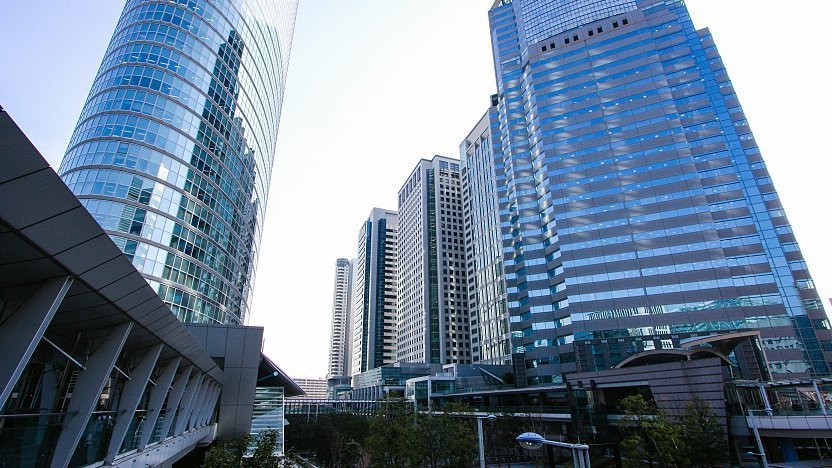
Shinagawa developed into an important town in the early 1600s after the construction of the Tokaido, the principal route connecting Edo (modern day Tokyo) and Kyoto. Shinagawa was the first of 53 post towns along the way after departing from Nihonbashi. Post towns provided food and lodgings for travelers, much like the hotels of Shinagawa do nowadays.
Eventually Tokyo expanded and absorbed Shinagawa. The rustic feel of a post town was replaced with the familiar trappings of a modern Japanese city. However, the former Tokaido road south of the station has retained a certain charm with a few minor shrines, temples and sites of interest. A small information center is located along the road near the Ebara Shrine.
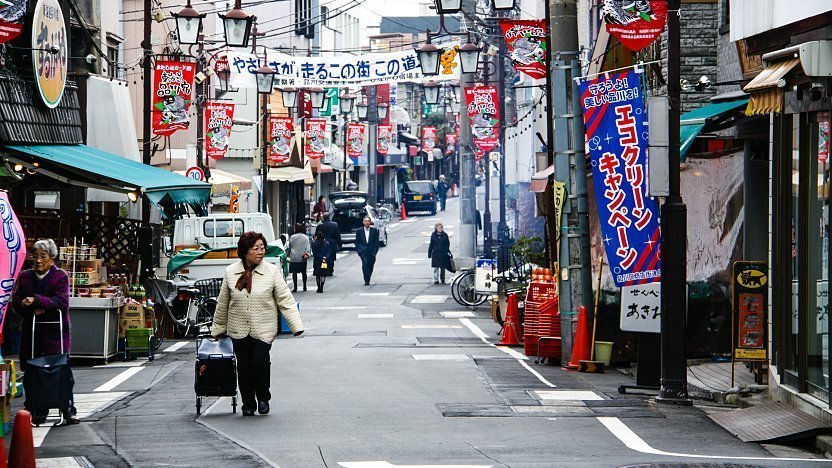
Getting there and around
Shinagawa is a major station on the JR Yamanote Line and the Tokaido Shinkansen, the JR Keihin-Tohoku Line, JR Tokaido Main Line, JR Yokosuka Line and Keikyu Main Line.
From Tokyo Station
10 minutes and 180 yen by JR Yamanote Line or JR Keihin-Tohoku Line.
From Shinjuku Station
18 minutes and 210 yen by JR Yamanote Line.
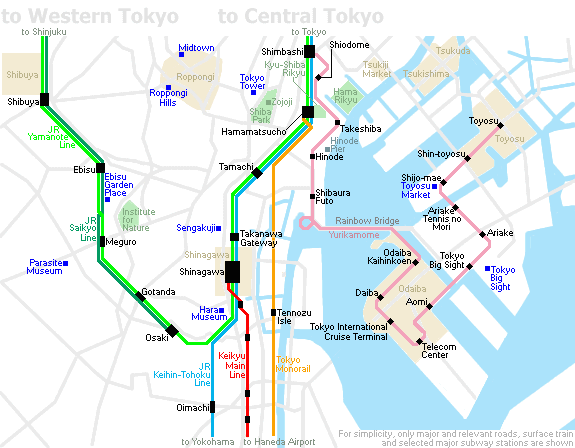
Questions? Ask in our forum.
Links and Resources
Hotels around Tokyo
-
-
![]() No Borders HostelIn the Shinagawa Ward district of Tokyo, close to Togoshi-ginza Shopping Street, No Borders Hostel features free bikes and a washing machine. Featuring a shared lounge, the guest house is close to several noted attractions, around 1.5 km from Meguro Fudoson Ryusen-ji Temple, 1.6 km from Yakushi-ji Tokyo Annex Temple and 1.7 km from Ohsaki New City Shopping Mall. The accommodation provides a shared kitchen and luggage storage space for guests. The air-conditioned units have a fully equipped kitchen with dining area, a microwave, kettle, and a fridge. Featuring a shared bathroom with a shower and slippers, units at the guest house also offer free WiFi. The units are equipped with heating facilities. Popular points of interest near the guest house include Anyo-in Temple, Remy Gotanda Shopping Mall and Musashi Koyama Shopping Street Palm. Tokyo Haneda Airport is 12 km away.View on Booking.com
No Borders HostelIn the Shinagawa Ward district of Tokyo, close to Togoshi-ginza Shopping Street, No Borders Hostel features free bikes and a washing machine. Featuring a shared lounge, the guest house is close to several noted attractions, around 1.5 km from Meguro Fudoson Ryusen-ji Temple, 1.6 km from Yakushi-ji Tokyo Annex Temple and 1.7 km from Ohsaki New City Shopping Mall. The accommodation provides a shared kitchen and luggage storage space for guests. The air-conditioned units have a fully equipped kitchen with dining area, a microwave, kettle, and a fridge. Featuring a shared bathroom with a shower and slippers, units at the guest house also offer free WiFi. The units are equipped with heating facilities. Popular points of interest near the guest house include Anyo-in Temple, Remy Gotanda Shopping Mall and Musashi Koyama Shopping Street Palm. Tokyo Haneda Airport is 12 km away.View on Booking.com -
![]() Ryokan SansuisoSituated 300 metres from Remy Gotanda Shopping Mall, Ryokan Sansuiso in Tokyo features rooms with air conditioning and free WiFi. This 2-star ryokan offers full-day security and luggage storage space. The ryokan has family rooms and facilities for disabled guests. At the ryokan, every unit is fitted with a tatami and a flat-screen TV. There is a private bathroom with bidet in some units, along with slippers, a hair dryer and free toiletries. The units are equipped with heating facilities. Popular points of interest near the ryokan include Museum of Package Culture, Ohsaki New City Shopping Mall and Shimazu Family Old Residence. Tokyo Haneda Airport is 11 km from the property.View on Booking.com
Ryokan SansuisoSituated 300 metres from Remy Gotanda Shopping Mall, Ryokan Sansuiso in Tokyo features rooms with air conditioning and free WiFi. This 2-star ryokan offers full-day security and luggage storage space. The ryokan has family rooms and facilities for disabled guests. At the ryokan, every unit is fitted with a tatami and a flat-screen TV. There is a private bathroom with bidet in some units, along with slippers, a hair dryer and free toiletries. The units are equipped with heating facilities. Popular points of interest near the ryokan include Museum of Package Culture, Ohsaki New City Shopping Mall and Shimazu Family Old Residence. Tokyo Haneda Airport is 11 km from the property.View on Booking.com -
![]() JR East Hotel Mets Premier GotandaSet in Tokyo, 100 metres from Remy Gotanda Shopping Mall, JR East Hotel Mets Premier Gotanda offers air-conditioned rooms and a restaurant. With free WiFi, this 3-star hotel offers a 24-hour front desk. Shimazu Family Old Residence is less than 1 km from the hotel and Hakone Meissen Antique Museum is a 12-minute walk away. The units in the hotel are equipped with a kettle. At JR East Hotel Mets Premier Gotanda every room includes a desk and a flat-screen TV. Popular points of interest near the accommodation include Yakushi-ji Tokyo Annex Temple, Museum of Package Culture and Hatakeyama Memorial Museum of Fine Art. Tokyo Haneda Airport is 12 km away.View on Booking.com
JR East Hotel Mets Premier GotandaSet in Tokyo, 100 metres from Remy Gotanda Shopping Mall, JR East Hotel Mets Premier Gotanda offers air-conditioned rooms and a restaurant. With free WiFi, this 3-star hotel offers a 24-hour front desk. Shimazu Family Old Residence is less than 1 km from the hotel and Hakone Meissen Antique Museum is a 12-minute walk away. The units in the hotel are equipped with a kettle. At JR East Hotel Mets Premier Gotanda every room includes a desk and a flat-screen TV. Popular points of interest near the accommodation include Yakushi-ji Tokyo Annex Temple, Museum of Package Culture and Hatakeyama Memorial Museum of Fine Art. Tokyo Haneda Airport is 12 km away.View on Booking.com -
![]() Takanawa Hanakohro - in Grand Prince Hotel TakanawaTakanawa Hanakohro - in Grand Prince Hotel Takanawa is located in Tokyo, 2.3 km from Ebisu Garden Place. Guests can enjoy the on-site restaurant. Every room at this ryokan is air conditioned and is fitted with a flat-screen TV. Some rooms have a seating area for your convenience. Every room is fitted with a private bathroom fitted with a bath. For your comfort, you will find bathrobes and slippers. There is free shuttle service at the property. Guests can enjoy the complimentary Japanese-style breakfast at the property. Tokyo Tower is 3.1 km from Takanawa Hanakohro - in Grand Prince Hotel Takanawa, while Roppongi Hills is 3.3 km from the property. The nearest airport is Tokyo Haneda International Airport, 9 km from the property.View on Booking.com
Takanawa Hanakohro - in Grand Prince Hotel TakanawaTakanawa Hanakohro - in Grand Prince Hotel Takanawa is located in Tokyo, 2.3 km from Ebisu Garden Place. Guests can enjoy the on-site restaurant. Every room at this ryokan is air conditioned and is fitted with a flat-screen TV. Some rooms have a seating area for your convenience. Every room is fitted with a private bathroom fitted with a bath. For your comfort, you will find bathrobes and slippers. There is free shuttle service at the property. Guests can enjoy the complimentary Japanese-style breakfast at the property. Tokyo Tower is 3.1 km from Takanawa Hanakohro - in Grand Prince Hotel Takanawa, while Roppongi Hills is 3.3 km from the property. The nearest airport is Tokyo Haneda International Airport, 9 km from the property.View on Booking.com -
![]() THREELocated within 800 metres of Shinagawa Historical Museum and less than 1 km of Raigoin Temple, THREE provides rooms with air conditioning and a private bathroom in Tokyo. Popular points of interest nearby include Tensosuwa Shrine, Samezu Hachiman Shrine and Statue of Sakamoto Ryoma. Free WiFi, a lift and full-day security are provided. The accommodation comes with a flat-screen TV and a private bathroom with bidet, a bath or shower and slippers, while the kitchen features a microwave, a fridge and kitchenware. At the aparthotel, all units are soundproof. At the aparthotel, all units have bed linen and towels. Popular points of interest near the aparthotel include Kashima Shrine, Seiun Inari Shrine and Raifukuji Temple. Tokyo Haneda Airport is 9 km away.View on Booking.com
THREELocated within 800 metres of Shinagawa Historical Museum and less than 1 km of Raigoin Temple, THREE provides rooms with air conditioning and a private bathroom in Tokyo. Popular points of interest nearby include Tensosuwa Shrine, Samezu Hachiman Shrine and Statue of Sakamoto Ryoma. Free WiFi, a lift and full-day security are provided. The accommodation comes with a flat-screen TV and a private bathroom with bidet, a bath or shower and slippers, while the kitchen features a microwave, a fridge and kitchenware. At the aparthotel, all units are soundproof. At the aparthotel, all units have bed linen and towels. Popular points of interest near the aparthotel include Kashima Shrine, Seiun Inari Shrine and Raifukuji Temple. Tokyo Haneda Airport is 9 km away.View on Booking.com -
![]() OMO5 Tokyo Gotanda by Hoshino ResortsOMO5 Tokyo Gotanda by Hoshino Resorts has a fitness centre, garden, a shared lounge and terrace in Tokyo. Each accommodation at the 4-star hotel has city views, and guests can enjoy access to a restaurant and to a bar. The accommodation offers entertainment staff and a 24-hour front desk. The hotel will provide guests with air-conditioned rooms offering a desk, a kettle, a fridge, a safety deposit box, a flat-screen TV and a private bathroom with a bidet. Some rooms also feature a kitchen with a microwave and a stovetop. All guest rooms at OMO5 Tokyo Gotanda by Hoshino Resorts come with a seating area. Guests at the accommodation can enjoy an American breakfast. Popular points of interest near OMO5 Tokyo Gotanda by Hoshino Resorts include Togoshi-ginza Shopping Street, Yakushi-ji Tokyo Annex Temple and Ohsaki New City Shopping Mall. Tokyo Haneda Airport is 12 km from the property.View on Booking.com
OMO5 Tokyo Gotanda by Hoshino ResortsOMO5 Tokyo Gotanda by Hoshino Resorts has a fitness centre, garden, a shared lounge and terrace in Tokyo. Each accommodation at the 4-star hotel has city views, and guests can enjoy access to a restaurant and to a bar. The accommodation offers entertainment staff and a 24-hour front desk. The hotel will provide guests with air-conditioned rooms offering a desk, a kettle, a fridge, a safety deposit box, a flat-screen TV and a private bathroom with a bidet. Some rooms also feature a kitchen with a microwave and a stovetop. All guest rooms at OMO5 Tokyo Gotanda by Hoshino Resorts come with a seating area. Guests at the accommodation can enjoy an American breakfast. Popular points of interest near OMO5 Tokyo Gotanda by Hoshino Resorts include Togoshi-ginza Shopping Street, Yakushi-ji Tokyo Annex Temple and Ohsaki New City Shopping Mall. Tokyo Haneda Airport is 12 km from the property.View on Booking.com -
![]() The Strings by InterContinental, Tokyo by IHGLocated right next to JR Shinagawa Shinkansen Station, The Strings by InterContinental Tokyo offers spacious accommodation with panoramic skyline views, personalised staff attention and a 24-hour fitness centre. Free Wi-Fi is provided throughout the property. Rooms at The Strings showcase tasteful modern design, with large windows that offer skyline views. Each room has a seating area and a flat-screen satellite TV. The adjacent JR Shinagawa Train Station offers access to Shinkansen bullet trains to Osaka. Local trains on the Yamanote Line run directly to the Shibuya and Shinjuku areas in about 20 minutes. Guests can take an Airport Limousine Bus directly from Narita International Airport, which is a 90-minute ride away. China Shadow Restaurant serves authentic Chinese dishes with 26th-floor views. The elegand Melodia offers modern Italian cuisine. Room service is also available.View on Booking.com
The Strings by InterContinental, Tokyo by IHGLocated right next to JR Shinagawa Shinkansen Station, The Strings by InterContinental Tokyo offers spacious accommodation with panoramic skyline views, personalised staff attention and a 24-hour fitness centre. Free Wi-Fi is provided throughout the property. Rooms at The Strings showcase tasteful modern design, with large windows that offer skyline views. Each room has a seating area and a flat-screen satellite TV. The adjacent JR Shinagawa Train Station offers access to Shinkansen bullet trains to Osaka. Local trains on the Yamanote Line run directly to the Shibuya and Shinjuku areas in about 20 minutes. Guests can take an Airport Limousine Bus directly from Narita International Airport, which is a 90-minute ride away. China Shadow Restaurant serves authentic Chinese dishes with 26th-floor views. The elegand Melodia offers modern Italian cuisine. Room service is also available.View on Booking.com -
![]() Miyako City Tokyo TakanawaMiyako City Tokyo Takanawa offers city view rooms in Tokyo and offers free WiFi and a 24-hour front desk. There is a restaurant on site for guest's convenience. Shinagawa Station is an 8-minute walk and Tokyo Station is a 20-minute train ride away. Tokyo Tower is a 25 minute train ride away, while Ebisu Garden Place is a 30-minute bus ride away from the hotel. All air-conditioned rooms are equipped with a flat-screen TV, electric kettle and fridge. Rooms are equipped with a private bathroom including free toiletries, toothbrushes and a hair dryer. A buffet breakfast is available daily at Miyako City Tokyo Takanawa featuring panini and a selection of hot meals, salads and drinks. Miyako City Tokyo Takanawa can conveniently provide information at the reception to help guests to get around the area. Guests can find a coin launderette or use laundry service at the front desk, while a drinks vending machine is fitted on site. Maxell Aqua Park is situated a 10-minute walk away. On trains, Haneda Airport is 20 minutes away, while Narita International Airport is 75 minutes from Miyako City Tokyo Takanawa.View on Booking.com
Miyako City Tokyo TakanawaMiyako City Tokyo Takanawa offers city view rooms in Tokyo and offers free WiFi and a 24-hour front desk. There is a restaurant on site for guest's convenience. Shinagawa Station is an 8-minute walk and Tokyo Station is a 20-minute train ride away. Tokyo Tower is a 25 minute train ride away, while Ebisu Garden Place is a 30-minute bus ride away from the hotel. All air-conditioned rooms are equipped with a flat-screen TV, electric kettle and fridge. Rooms are equipped with a private bathroom including free toiletries, toothbrushes and a hair dryer. A buffet breakfast is available daily at Miyako City Tokyo Takanawa featuring panini and a selection of hot meals, salads and drinks. Miyako City Tokyo Takanawa can conveniently provide information at the reception to help guests to get around the area. Guests can find a coin launderette or use laundry service at the front desk, while a drinks vending machine is fitted on site. Maxell Aqua Park is situated a 10-minute walk away. On trains, Haneda Airport is 20 minutes away, while Narita International Airport is 75 minutes from Miyako City Tokyo Takanawa.View on Booking.com -
![]() Tokyu Stay Takanawa Shinagawa AreaNo transfers to Haneda Airport and Narita Airport!! Conveniently located just a minute's walk away from Sengakuji Station, Tokyu Stay Takanawa Shinagawa Area offers free luggage storage during the guest's stay. There is a 24-hour front desk at this hotel. For a comfortable stay, all guest rooms are furnished with extra long beds, TV and a washing machine. A safety deposit box, desk and trouser press are included in each room. Guests can use the microwave and refrigerator provided in their rooms. The private bathroom comes with a bath or shower, toilet, a hairdryer and amenities including toothbrushes. Guests can enjoy a buffet breakfast on site for an additional fee. Several local dining options, bars and cafes are located just a minute's walk from this hotel. JR Shinagawa Station is a 5-minute train ride away on Keikyu Line. After a 20-minute train ride from the hotel, visitors can enjoy the sight of Tokyo Tower. Guests can take a 30-minute train ride to Odaiba-Kaihinkoen Station, a popular destination for shopping and dining. Shibuya Station is 20 minutes from Tokyu Stay Takanawa Shinagawa Area on Yamanote and Keikyu Lines.View on Booking.com
Tokyu Stay Takanawa Shinagawa AreaNo transfers to Haneda Airport and Narita Airport!! Conveniently located just a minute's walk away from Sengakuji Station, Tokyu Stay Takanawa Shinagawa Area offers free luggage storage during the guest's stay. There is a 24-hour front desk at this hotel. For a comfortable stay, all guest rooms are furnished with extra long beds, TV and a washing machine. A safety deposit box, desk and trouser press are included in each room. Guests can use the microwave and refrigerator provided in their rooms. The private bathroom comes with a bath or shower, toilet, a hairdryer and amenities including toothbrushes. Guests can enjoy a buffet breakfast on site for an additional fee. Several local dining options, bars and cafes are located just a minute's walk from this hotel. JR Shinagawa Station is a 5-minute train ride away on Keikyu Line. After a 20-minute train ride from the hotel, visitors can enjoy the sight of Tokyo Tower. Guests can take a 30-minute train ride to Odaiba-Kaihinkoen Station, a popular destination for shopping and dining. Shibuya Station is 20 minutes from Tokyu Stay Takanawa Shinagawa Area on Yamanote and Keikyu Lines.View on Booking.com -
![]() The Prince Sakura Tower Tokyo, Autograph CollectionThe Prince Sakura Tower Tokyo is a 3-minute walk from JR Shinagawa Station Takanawa Exit. The hotel offers free whirlpool-bath and sauna facilities as well as free WiFi. Air-conditioned guestrooms feature large windows with views of the hotelfs beautiful Japanese Garden. Each room is equipped with a work desk, a fridge and a TV with cable channels. Guests can relax in the Prince Sakura's whirlpool or go for a swim at the seasonal outdoor pool at nearby Grand Prince Hotel Shin Takanawa (extra charges apply to both). Laundry and dry cleaning services are offered. Ristorante Caffe Ciliegio is open for breakfast hours. Other on-site restaurants serves a selection of Japanese and Italian dishes. Hotel Prince Sakura Tower is a 5-minute walk from Maxell AQUA PARK Shinagawa and a 15-minute train ride from Tokyo Station. Big Sight Convention Centre is 11 km away, and the Roppongi area is 5.5 km away.View on Booking.com
The Prince Sakura Tower Tokyo, Autograph CollectionThe Prince Sakura Tower Tokyo is a 3-minute walk from JR Shinagawa Station Takanawa Exit. The hotel offers free whirlpool-bath and sauna facilities as well as free WiFi. Air-conditioned guestrooms feature large windows with views of the hotelfs beautiful Japanese Garden. Each room is equipped with a work desk, a fridge and a TV with cable channels. Guests can relax in the Prince Sakura's whirlpool or go for a swim at the seasonal outdoor pool at nearby Grand Prince Hotel Shin Takanawa (extra charges apply to both). Laundry and dry cleaning services are offered. Ristorante Caffe Ciliegio is open for breakfast hours. Other on-site restaurants serves a selection of Japanese and Italian dishes. Hotel Prince Sakura Tower is a 5-minute walk from Maxell AQUA PARK Shinagawa and a 15-minute train ride from Tokyo Station. Big Sight Convention Centre is 11 km away, and the Roppongi area is 5.5 km away.View on Booking.com
-
Tokyo Restaurants
-
-
![]() Udatsu SushiAwarded One Star in 2024 - People from around the world visit to experience Mr. Udatsu's sushi. Inside the restaurant, which resembles an art gallery with its modern decor and numerous artworks, guests can enjoy sushi crafted from the highest quality ingredients. While the foundation is traditional nigiri, the menu also features original creations born from the chef's relentless curiosity and innovation.View on JapanEatinerary
Udatsu SushiAwarded One Star in 2024 - People from around the world visit to experience Mr. Udatsu's sushi. Inside the restaurant, which resembles an art gallery with its modern decor and numerous artworks, guests can enjoy sushi crafted from the highest quality ingredients. While the foundation is traditional nigiri, the menu also features original creations born from the chef's relentless curiosity and innovation.View on JapanEatinerary -
![]() WaketokuyamaAwarded One Star in 2025 - With a meticulous focus on allowing guests to enjoy seasonal ingredients at their peak, the menu changes approximately every two weeks. The signature dish, "Grilled Abalone with Seaweed Aroma," features thick slices of abalone generously coated in a rich liver sauce, offering an exquisite taste of the sea.View on JapanEatinerary
WaketokuyamaAwarded One Star in 2025 - With a meticulous focus on allowing guests to enjoy seasonal ingredients at their peak, the menu changes approximately every two weeks. The signature dish, "Grilled Abalone with Seaweed Aroma," features thick slices of abalone generously coated in a rich liver sauce, offering an exquisite taste of the sea.View on JapanEatinerary -
![]() Fry-yaExquisite fried dishes crafted by a head chef with experience earning stars in both Switzerland and Japan. The remarkably light tonkatsu is a favorite not only among Japanese diners but also among visitors to Japan. With the theme of "small portions, many varieties," guests can enjoy sampling a wide selection of tonkatsu in smaller portions.View on JapanEatinerary
Fry-yaExquisite fried dishes crafted by a head chef with experience earning stars in both Switzerland and Japan. The remarkably light tonkatsu is a favorite not only among Japanese diners but also among visitors to Japan. With the theme of "small portions, many varieties," guests can enjoy sampling a wide selection of tonkatsu in smaller portions.View on JapanEatinerary -
![]() TEMPURA & WINE SHINOThe kind of restaurant that is known only to true gourmets, serving as a sort of "Hidden gem". In a chic space with black walls and a ceiling adorned in gold, you can enjoy tempura with a light and elegant texture, delicately fried using refined techniques to achieve a thin, white batter that minimizes the aroma of oil. Savor tempura that maximizes the flavors of the ingredients, paired with Champagne and Burgundy wines carefully selected by the sommelier.View on JapanEatinerary
TEMPURA & WINE SHINOThe kind of restaurant that is known only to true gourmets, serving as a sort of "Hidden gem". In a chic space with black walls and a ceiling adorned in gold, you can enjoy tempura with a light and elegant texture, delicately fried using refined techniques to achieve a thin, white batter that minimizes the aroma of oil. Savor tempura that maximizes the flavors of the ingredients, paired with Champagne and Burgundy wines carefully selected by the sommelier.View on JapanEatinerary -
![]() HikarimonoWith a prime location and quality that rivals high-end sushi restaurants, this restaurant maintains the goal of being a place for everyday dining. It offers a casual and relaxed atmosphere, free from stiffness or formality. The signature "Hikari-maki," featuring ingredients such as sardines, pickled plum, and bettarazuke (sweet pickled radish), boasts unique flavors that are especially popular among international visitors.View on JapanEatinerary
HikarimonoWith a prime location and quality that rivals high-end sushi restaurants, this restaurant maintains the goal of being a place for everyday dining. It offers a casual and relaxed atmosphere, free from stiffness or formality. The signature "Hikari-maki," featuring ingredients such as sardines, pickled plum, and bettarazuke (sweet pickled radish), boasts unique flavors that are especially popular among international visitors.View on JapanEatinerary -
![]() Daikanyama Issai KassaiThe owner, Shinji Odahara, boasts a 30-year career in Japanese cuisine and has the remarkable achievement of opening a Japanese restaurant in New York that earned a star. Guests can enjoy exquisite charcoal-grilled meat dishes and rice cooked in a clay pot, all within a modern interior with dim lighting that sparks adult curiosity.View on JapanEatinerary
Daikanyama Issai KassaiThe owner, Shinji Odahara, boasts a 30-year career in Japanese cuisine and has the remarkable achievement of opening a Japanese restaurant in New York that earned a star. Guests can enjoy exquisite charcoal-grilled meat dishes and rice cooked in a clay pot, all within a modern interior with dim lighting that sparks adult curiosity.View on JapanEatinerary -
![]() SudachiYou can enjoy dishes that make the most of seasonal ingredients, transcending the traditional boundaries of Japanese cuisine. While rooted in the traditions of Japanese cooking, the menu features unique offerings such as dishes incorporating shark fin - rarely seen in Japanese cuisine - and sushi that reflects the chef's background in sushi restaurants. At the open kitchen counter, where the lively atmosphere comes alive, you can savor the culinary creations with all five senses.View on JapanEatinerary
SudachiYou can enjoy dishes that make the most of seasonal ingredients, transcending the traditional boundaries of Japanese cuisine. While rooted in the traditions of Japanese cooking, the menu features unique offerings such as dishes incorporating shark fin - rarely seen in Japanese cuisine - and sushi that reflects the chef's background in sushi restaurants. At the open kitchen counter, where the lively atmosphere comes alive, you can savor the culinary creations with all five senses.View on JapanEatinerary -
![]() TorinaoIn a relaxed and serene atmosphere, you can enjoy exquisite yakitori made with "Koshu Kenmidori" chicken, grilled to perfection over Kishu Binchotan charcoal for a delightful aroma. The tender and fluffy tsukune (chicken meatball) is particularly popular for its juicy flavor. Additionally, the carefully selected Japanese sake, chosen by the owner, pairs wonderfully with the yakitori.View on JapanEatinerary
TorinaoIn a relaxed and serene atmosphere, you can enjoy exquisite yakitori made with "Koshu Kenmidori" chicken, grilled to perfection over Kishu Binchotan charcoal for a delightful aroma. The tender and fluffy tsukune (chicken meatball) is particularly popular for its juicy flavor. Additionally, the carefully selected Japanese sake, chosen by the owner, pairs wonderfully with the yakitori.View on JapanEatinerary -
![]() IchiuChef Hamano is renowned for his experience training at three different two-star restaurants. In addition to sushi, he has honed his skills in Japanese cuisine at the esteemed Akasaka Kikunoi, giving him a strong foundation in traditional Japanese culinary techniques. When it comes to nigiri, he is meticulous not only about the toppings but also the rice. He uses a premium rice variety from Akita, enhanced with two types of red vinegar and plum vinegar to create a refreshing flavor.View on JapanEatinerary
IchiuChef Hamano is renowned for his experience training at three different two-star restaurants. In addition to sushi, he has honed his skills in Japanese cuisine at the esteemed Akasaka Kikunoi, giving him a strong foundation in traditional Japanese culinary techniques. When it comes to nigiri, he is meticulous not only about the toppings but also the rice. He uses a premium rice variety from Akita, enhanced with two types of red vinegar and plum vinegar to create a refreshing flavor.View on JapanEatinerary -
![]() Yakiniku OnukiThe restaurant is proud of its "Tare Yakiniku" (grilled meat with sauce), which is made from Japanese black beef that has inherited the "excellent sauce" from the main restaurant, and is so tender that it melts in your mouth.The beef tongue is also superb. The thickly cut beef tongue is very difficult to grill, so the waiter grills it and serves it to you. Enjoy a blissful moment with wine that pairs well with the meat.View on JapanEatinerary
Yakiniku OnukiThe restaurant is proud of its "Tare Yakiniku" (grilled meat with sauce), which is made from Japanese black beef that has inherited the "excellent sauce" from the main restaurant, and is so tender that it melts in your mouth.The beef tongue is also superb. The thickly cut beef tongue is very difficult to grill, so the waiter grills it and serves it to you. Enjoy a blissful moment with wine that pairs well with the meat.View on JapanEatinerary
-
Experiences around Tokyo
-
-
![]() SponsoredPrivate Toyosu Market Off-Limits Wholesale Area Tour with an Acclaimed ChefTour the wholesale area of Toyosu Market, which is normally off-limits to the public, with distinguished Japanese cuisine chef Kazuhiko Tajima, who previously worked as the chef for the official residence of the Consulate General of Japan in San Francisco.View experienceSponsored
SponsoredPrivate Toyosu Market Off-Limits Wholesale Area Tour with an Acclaimed ChefTour the wholesale area of Toyosu Market, which is normally off-limits to the public, with distinguished Japanese cuisine chef Kazuhiko Tajima, who previously worked as the chef for the official residence of the Consulate General of Japan in San Francisco.View experienceSponsored
-
-
-
![]() Asakusa Kimono&Yukata Rental at Kimono Miyabi Asakusa in Main Branch**Klook Exclusive Free Next Day Return! Limited Time Only!** Show this message and return your Kimono the next day for FREE for rental during Sep 15 - Dec 15, 2023. Exclusions applied to Formal Kimono Furisode and Homongi. See What to Expect for more detailsView on Klook
Asakusa Kimono&Yukata Rental at Kimono Miyabi Asakusa in Main Branch**Klook Exclusive Free Next Day Return! Limited Time Only!** Show this message and return your Kimono the next day for FREE for rental during Sep 15 - Dec 15, 2023. Exclusions applied to Formal Kimono Furisode and Homongi. See What to Expect for more detailsView on Klook -
![]() Sushi Making Tokyo No1 Cooking Class in JapanYou can learn how to make **Maki-Sushi (Roll-Sushi) & Temari-Sushi** or **Maki-Sushi (Roll-Sushi) & Nigiri Sushi**View on Klook
Sushi Making Tokyo No1 Cooking Class in JapanYou can learn how to make **Maki-Sushi (Roll-Sushi) & Temari-Sushi** or **Maki-Sushi (Roll-Sushi) & Nigiri Sushi**View on Klook -
![]() Original Glass Making Experience (Tokyo)You can make your own original work by digging the glass as if you were writing with a pen.View on Klook
Original Glass Making Experience (Tokyo)You can make your own original work by digging the glass as if you were writing with a pen.View on Klook -
![]() Tokyo Tower to Shibuya Crossing: Costume Drive Through City IconsPick your costume and enjoy this premium customized go-kart in Tokyo!View on Klook
Tokyo Tower to Shibuya Crossing: Costume Drive Through City IconsPick your costume and enjoy this premium customized go-kart in Tokyo!View on Klook -
![]() Tokyo Private Chartered Day TourbExclusive Driver for 10 Hours to Explore Tokyo's Popular Attractions (Senso-ji Temple, Meiji Jingu Shrine, Shibuya Sky)*Tokyo has many sightseeing spots and experience activities, ranging from historical sites to futuristic locationsView on Klook
Tokyo Private Chartered Day TourbExclusive Driver for 10 Hours to Explore Tokyo's Popular Attractions (Senso-ji Temple, Meiji Jingu Shrine, Shibuya Sky)*Tokyo has many sightseeing spots and experience activities, ranging from historical sites to futuristic locationsView on Klook -
![]() Tokyo City, Private Customized Day Trip with English-speaking DriverExplore Tokyo with an English-speaking chauffeur and immerse yourself in a city that seamlessly blends modernity with its rich traditional cultureView on Klook
Tokyo City, Private Customized Day Trip with English-speaking DriverExplore Tokyo with an English-speaking chauffeur and immerse yourself in a city that seamlessly blends modernity with its rich traditional cultureView on Klook -
![]() Fancy Kimono Dress up and Photoshoot in TokyoMinina will give you a fabulous memorial of a Trip to Tokyo and change you whatever you want to beView on Klook
Fancy Kimono Dress up and Photoshoot in TokyoMinina will give you a fabulous memorial of a Trip to Tokyo and change you whatever you want to beView on Klook -
![]() Tokyo Asakusa Kimono&Yukata Rental at Kimono Miyabi Asakusa StationEnjoy visiting Asakusa or Ueno while wearing a Japanese traditional kimono by Kimono MiyabiView on Klook
Tokyo Asakusa Kimono&Yukata Rental at Kimono Miyabi Asakusa StationEnjoy visiting Asakusa or Ueno while wearing a Japanese traditional kimono by Kimono MiyabiView on Klook -
![]() Tokyo Asakusa Kimono & Furisode Rental ExperienceTake the subway to Asakusa Station (Ginza Line) Exit 4 and walk for 20 seconds. It is 220 meters away from Sensoji Kaminarimon Gate. The location is perfect!View on Klook
Tokyo Asakusa Kimono & Furisode Rental ExperienceTake the subway to Asakusa Station (Ginza Line) Exit 4 and walk for 20 seconds. It is 220 meters away from Sensoji Kaminarimon Gate. The location is perfect!View on Klook -
![]() Asakusa Kimono Rental Experience at a Historic Japanese ShopVisit Yae in Asakusa, Tokyo and get to experience Japanese culture through clothing by renting a kimono/yukataView on Klook
Asakusa Kimono Rental Experience at a Historic Japanese ShopVisit Yae in Asakusa, Tokyo and get to experience Japanese culture through clothing by renting a kimono/yukataView on Klook
-

